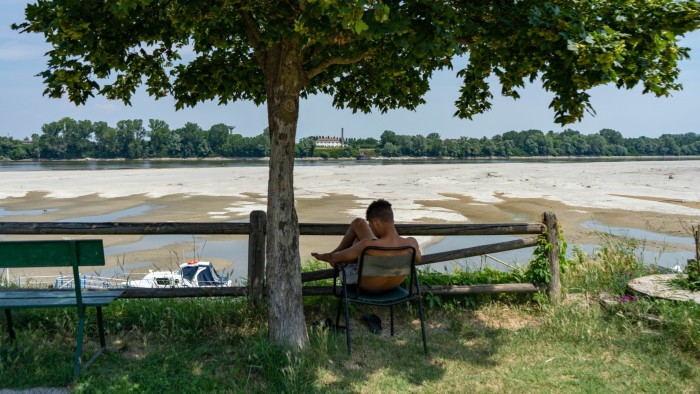Unlock the Editor’s Digest for free
Roula Khalaf, Editor of the FT, selects her favourite stories in this weekly newsletter.
Brussels will urge EU countries to cut water use by at least 10 per cent by 2030 as the bloc faces longer and more widespread droughts.
The plan, due to be presented next month and seen by the Financial Times, marks the first time the European Commission will set a target for water efficiency and signals concern about the EU’s dwindling groundwater reserves.
“We need to think about how we need to use water more efficiently,” EU environment commissioner Jessika Roswall told the Financial Times. “When we have a shower, we need to think about it.”
Summertime mandates of limiting water consumption, including bans on filling up swimming pools, have become common in southern Europe.
Haris Sachinis, the chief executive of Eydap, the largest water company in Greece, has warned repeatedly that if no action is taken immediately, Athens could run out of water in the next two years, especially if the current hydrological conditions persist.
In Cyprus, 2025 “marks our third consecutive drought year and represents the eighth worst period for water reserves” in 50 years, according to agriculture minister Maria Panayiotou.
Even in Roswall’s native Sweden, one of Europe’s northernmost countries, watering gardens with a hose is now banned in some areas. In France and Spain, fights have broken out between farmers and environmentalists over water rights and plans to build dams in recent years.
The water plan will set out how the EU can become more resilient in the face of water stress — when demand outstrips supply — and aims to push member states to invest more in pipes, pumps and treatment plants.

About 25 per cent of water in the EU is lost through leaks, according to the water industry body EarEau. But the percentage is much higher in some countries such as Bulgaria, which loses about 60 per cent of water through leaky pipes each year.
The commission estimates that €23bn is needed annually to fund water infrastructure properly, officials involved in drafting the water plan have said. The European Investment Bank will also put together a programme of €15bn of loans and guarantees to finance water infrastructure from 2025 to 2027, the document said.
The plan said that only 2.4 per cent of water is reused each year in the EU — a number that should increase. The draft may be subject to change before its publication.

The 10 per cent savings target will not be mandatory, with the commission encouraging member states to set their own national goals and gather more data — often lacking in the water sector. Some particularly water stressed countries, such as Spain, have already set their own water efficiency targets.
But in a climate assessment published on Wednesday, the commission said that only a “limited number” of member states had considered water resilience measures.
The EU plan comes after the commission last year warned about growing competition for water resources, including the “potential risk of conflicts within and among the member states”.
Roswall said that member states needed to work together on water-related issues: “When it comes to water it doesn’t follow national boundaries.”
Banks and financial institutions are also increasingly recognising environmental factors such as water shortages as a critical threat to business. The European Central Bank said last week that “surface water scarcity alone puts almost 15 per cent of the euro area’s economic output at risk”.
Despite conditions in southern Europe being less dire than last year thanks to heavy rain during the spring filling reservoirs, officials and businesses are concerned about short-term water shortages.
Additional reporting by Barney Jopson in Madrid. Cartography by Steven Bernard
